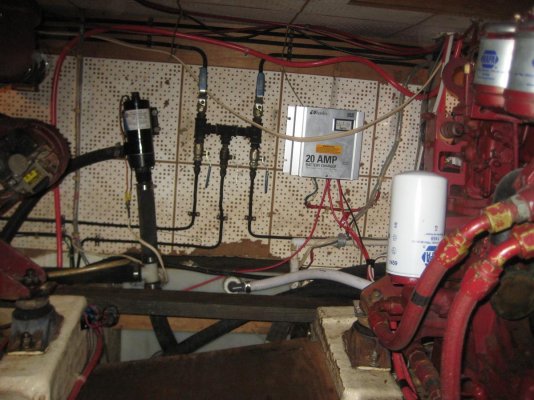DHeckrotte
Guru
Revel is currently equipped with a nice new Raritan Elegance with the fresh and sea water supply, a holding tank, a macerator pump to overboard discharge, and a pump-out fitting on deck. The hoses to the macerator and overboard discharge do not incorporate a vented loop. Since I will be moving the Racor filter to a place within reach, I will have to move the macerator and hoses. (See pic: One new Racor would go where the macerator is; the other where the battery charger is.)
Question one: verify that I really ought/need to have a vented loop in this macerator - overboard discharge piece of the system.
Question two: why would - where would I ever use the overboard discharge, assuming (confidently) that I would never be swine enough to pump the holding tank in prohibited waters even under duress.
Seems to me that I should/could reasonably simply eliminate the pump and overboard discharge. I mean, we're an East Coast boat with East Coast destinations in mind. The Gulf of Maine or the St Lawrence Bay are distant possibilities, particularly for this boat's sea-keeping capabilities.
Question one: verify that I really ought/need to have a vented loop in this macerator - overboard discharge piece of the system.
Question two: why would - where would I ever use the overboard discharge, assuming (confidently) that I would never be swine enough to pump the holding tank in prohibited waters even under duress.
Seems to me that I should/could reasonably simply eliminate the pump and overboard discharge. I mean, we're an East Coast boat with East Coast destinations in mind. The Gulf of Maine or the St Lawrence Bay are distant possibilities, particularly for this boat's sea-keeping capabilities.


